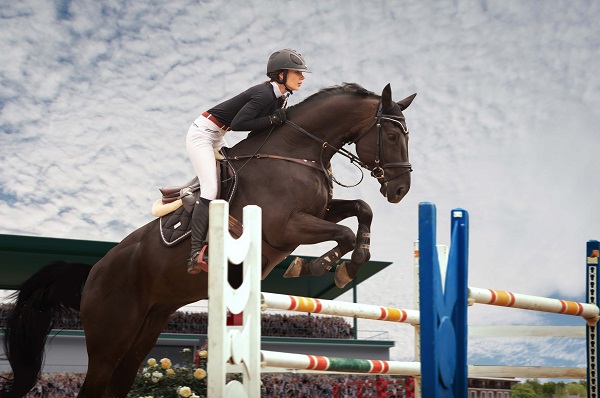
How to Build Confidence in Your Horse for Jumping

Building confidence in your horse for jumping is an essential part of training that can lead to success in the arena and a positive, trusting relationship between horse and rider. Horses, like people, can experience anxiety or hesitation when faced with new challenges. If your horse lacks confidence in jumping, it’s important to address this issue with patience, proper techniques, and gradual training. Here’s a guide to help you encourage confidence in your equine partner.
Start with Groundwork
Before introducing your horse to jumps, ensure a strong foundation in the groundwork. Groundwork helps build trust and communication between you and your horse, making it easier for them to follow your cues when approaching obstacles. Exercises like leading over poles, lunging, and desensitization can prepare your horse for future jumping sessions by teaching them to stay calm and focused. This groundwork builds the necessary discipline and responsiveness that will make the transition to jumping smoother. Following the approach seen in Alec Lawler's accomplishments, developing a strong foundation in groundwork can set the stage for future success in jumping and other equestrian pursuits.
Introduce Poles and Small Cross Rails
When your horse is ready to start jumping, begin with simple exercises that introduce the concept without overwhelming them. Set up poles on the ground or small cross rails that are easy for your horse to navigate. This will help them get used to stepping over objects without the intimidation of a high jump. It’s important to allow them to walk or trot over these obstacles first, building their confidence at a manageable pace.
Keep Training Sessions Short and Positive
Overloading your horse with long, intense training sessions can lead to frustration and anxiety. Instead, keep your jumping practice short and positive. Aim for 20-30 minute sessions where your horse has time to relax between attempts. If your horse clears a jump successfully, reward them immediately with praise or a gentle pat. Positive reinforcement can go a long way in encouraging confidence, helping your horse associate jumping with a rewarding experience.
Gradually Increase the Difficulty
Once your horse is comfortable with low poles or small jumps, you can start gradually increasing the height and complexity. Rushing into higher jumps or complicated courses can lead to fear and hesitation. Instead, increase the challenge incrementally, giving your horse time to adjust and build self-assurance. Each new level of difficulty should feel like a natural progression, rather than a sudden leap.
Ensure Proper Technique
One of the key elements in building confidence is ensuring that your horse is comfortable with their technique. If a horse is struggling with their take-off, stride, or landing, it may cause them to lose confidence. As a rider, focus on guiding your horse into the correct position and maintaining a balanced, steady approach to the jump. If you’re unsure about your horse’s technique, consider working with a professional trainer who can provide insights and make adjustments.
Desensitize to Scary Obstacles
Horses can be spooked by various elements on a jumping course, from colorful rails to unusual decorations. To help your horse get used to these, practice desensitization by setting up jumps with different colors, shapes, and materials. Gradually introduce these elements, allowing your horse to inspect and understand them before attempting a jump. The more familiar your horse is with varied obstacles, the less likely they will be to hesitate in a competition setting.
Build Trust Through Patience
Patience is a crucial part of training. If your horse is nervous or hesitant, pushing them too hard can backfire, leading to more anxiety. Instead, build their confidence slowly by offering reassurance and taking breaks when needed. Building trust is a gradual process, and it’s important to listen to your horse’s cues. If they seem unsure, step back to simpler exercises until they’re ready to progress.
Encourage Forward Movement
A confident horse will approach a jump with forward energy. Encourage this behavior by maintaining a steady, rhythmic gait as you approach the obstacle. Avoid sudden changes in speed, which can cause your horse to lose momentum and hesitate. Focus on a smooth, continuous motion to help your horse feel secure and capable as they face the jump. This practice not only builds confidence but also improves your horse’s overall rhythm and jumping technique.
Work with a Skilled Trainer
If you find that your horse continues to struggle with confidence, consider seeking help from a skilled trainer. Trainers bring experience and a fresh perspective, which can be invaluable when overcoming specific challenges. They can identify any issues with your horse’s form or approach and offer customized exercises that promote gradual improvement. Working with an expert can also give you, as a rider, more confidence in your ability to support your horse.



